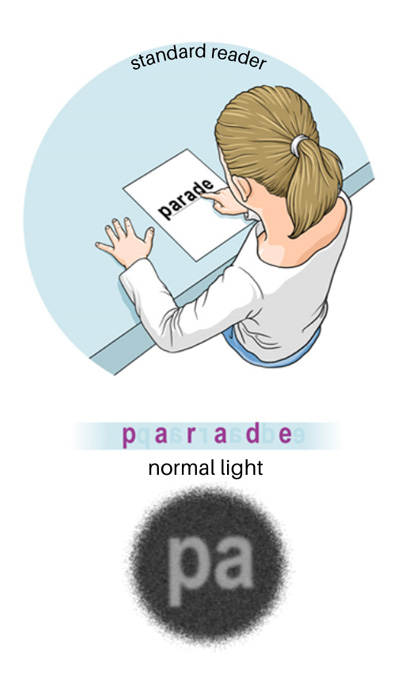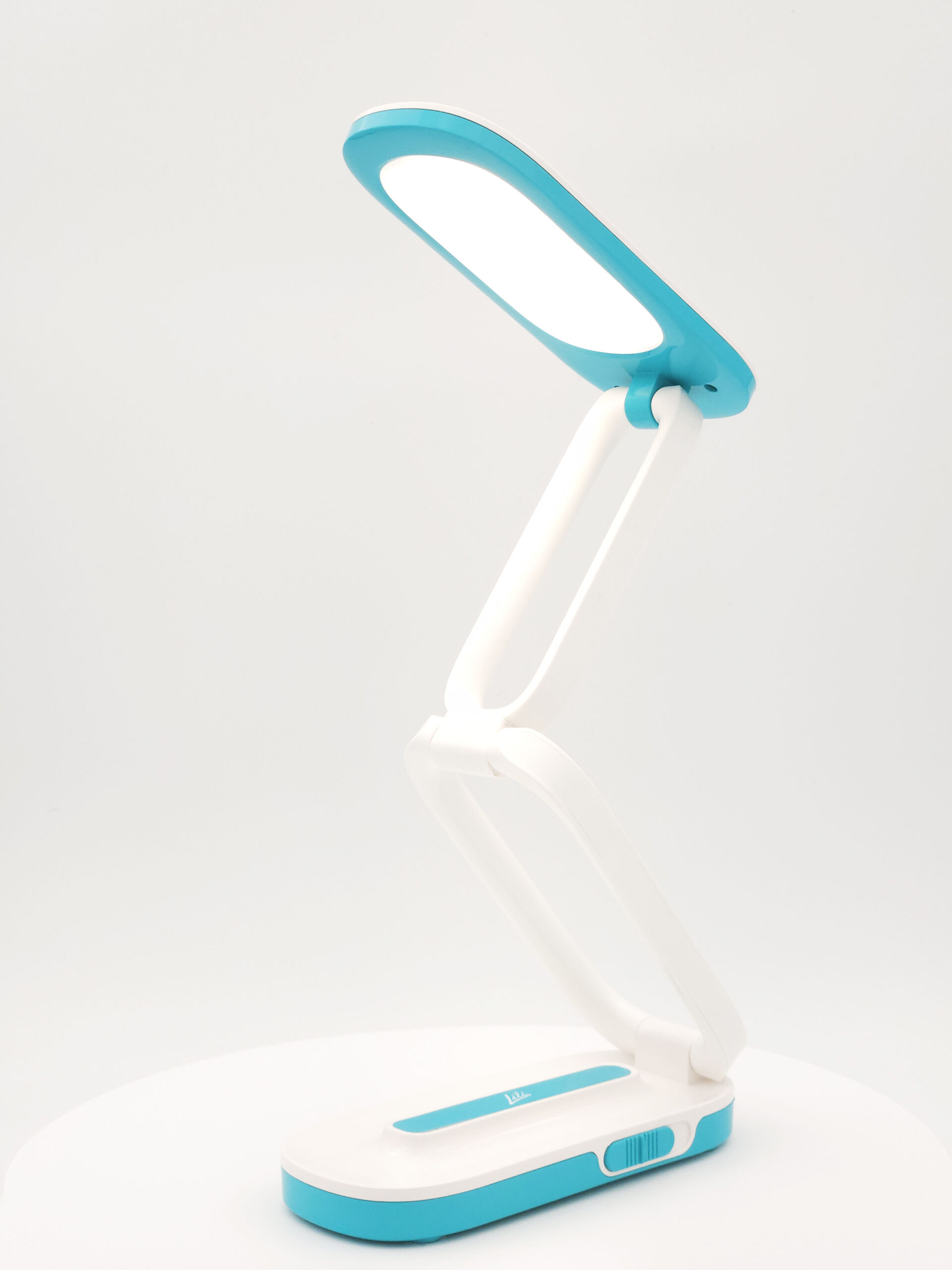
Lili, how does it work?
Lili for Life’s technology is based on award-winning scientific research carried out by two researchers in Rennes. It uses flashes of light that are imperceptible to the naked eye to improve the way many dyslexics perceive the written word.
Thanks to this innovation, reading becomes smoother, faster and much less tiring, making it easier to grasp the meaning of the text.
Reading with dyslexia and the Lili lamp
Through a stroboscopic effect of the light, invisible to the naked eye, the lamp creates a temporal shift in perception between each eye.
The images are no longer processed simultaneously by the brain and the ‘mirror’ image effect is erased.
The person can read the word ‘parade’ without difficulty.
The image is not superimposed.
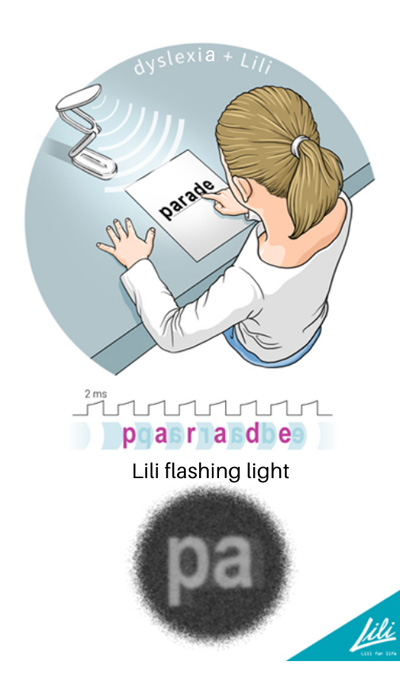
Practical and suitable for all dyslexics: discover Lili
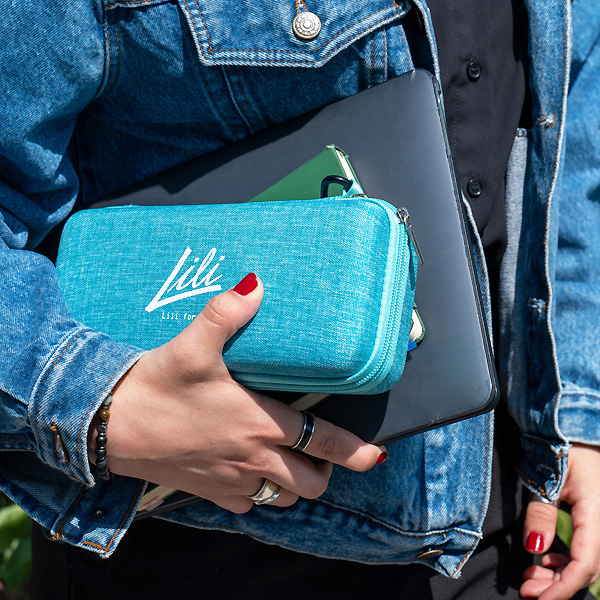
Portable and compact
Take lili everywhere with you
Designed and made in France, Lili has been designed to be as compact as possible.
Easy to fold, it slips into its protective cover and goes everywhere with you, whether you’re at school, at the office or on the move.
100% customisable for your comfort
Adjust your reading experience with ease
Thanks to the Lili For Life mobile app (available on iOS and Android), Lili is fully customisable. Change the light settings directly from your smartphone to adapt it to your preferences and ensure optimum reading comfort.
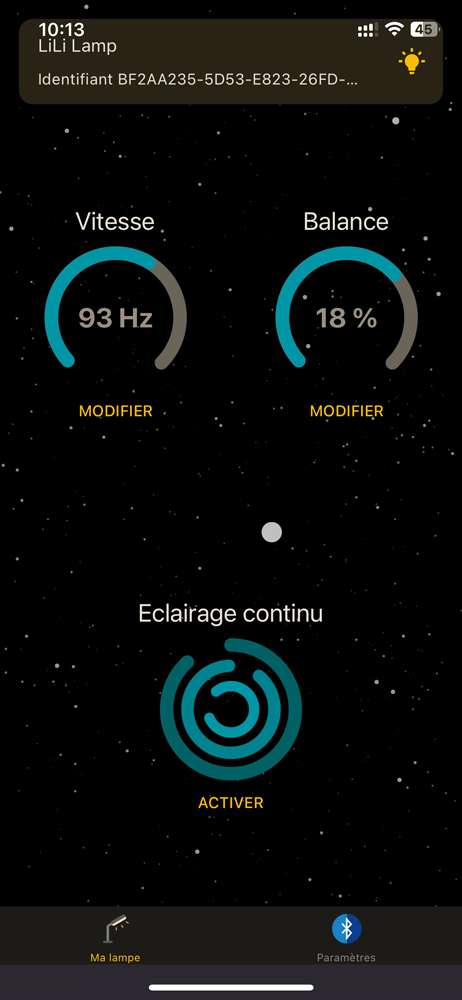

Autonomous so you can go anywhere
Up to 7.5 hours of autonomy
Lili is equipped with a rechargeable battery offering up to 7.5 hours of operation. So you can enjoy comfortable reading wherever you are, without worrying about the battery.

